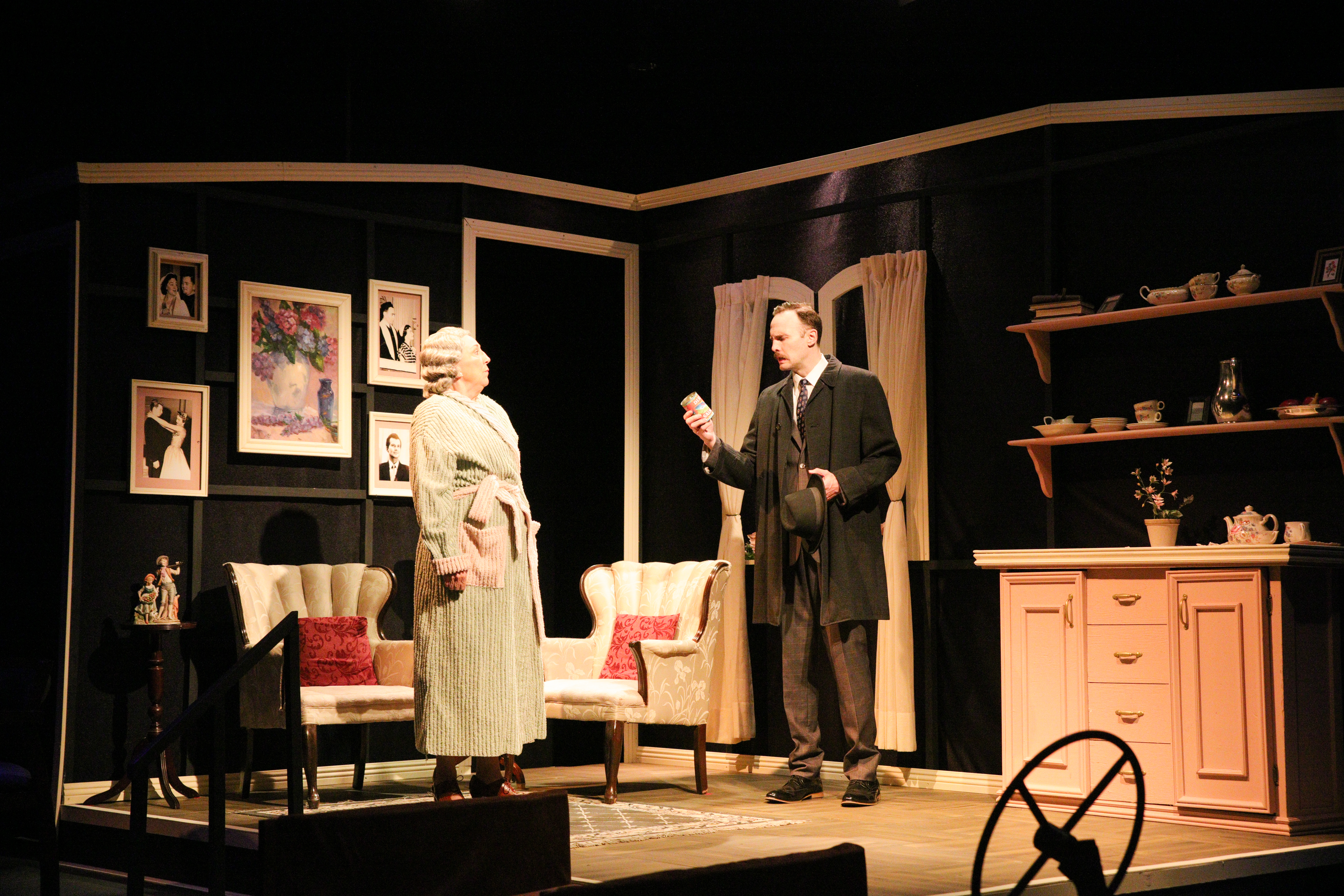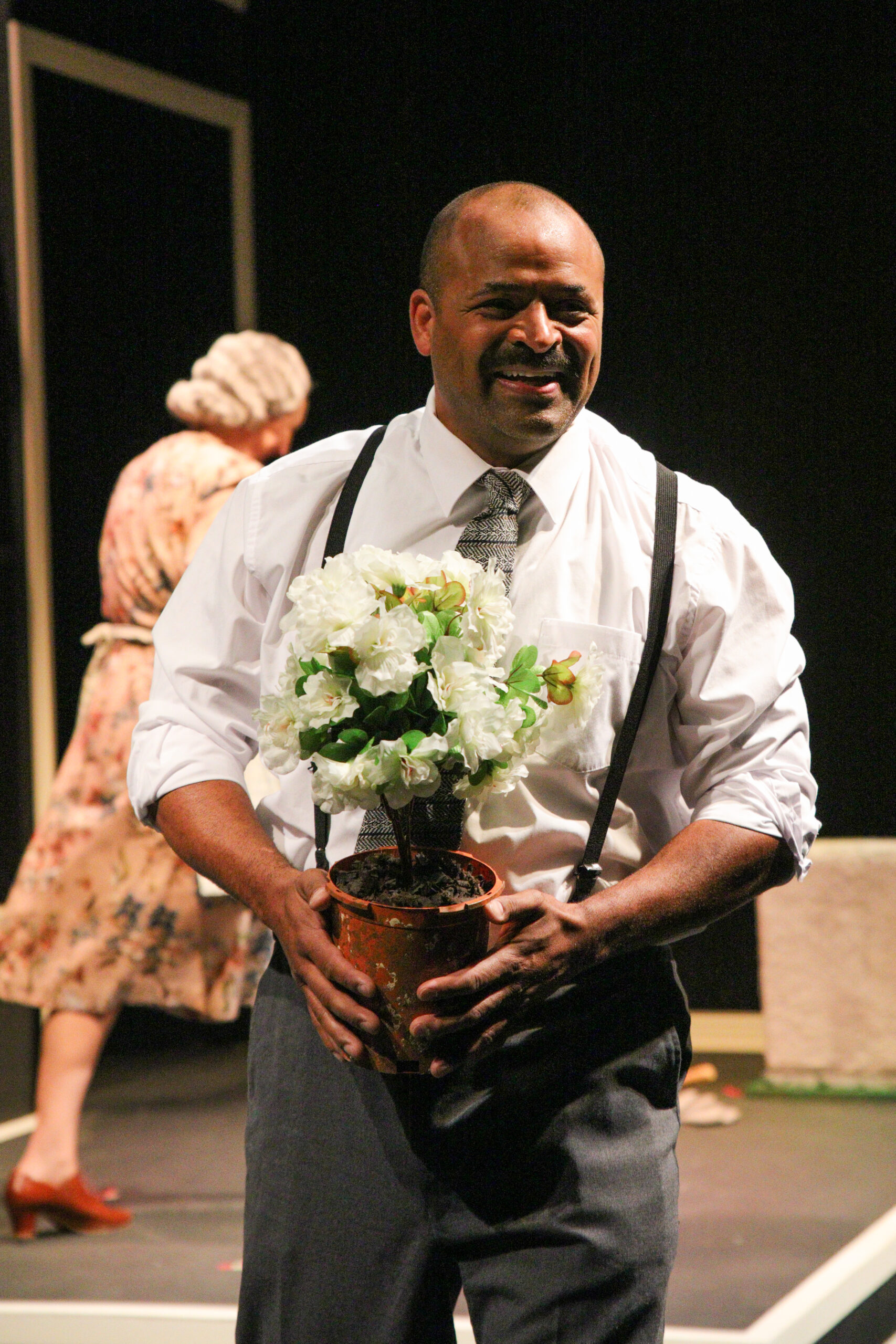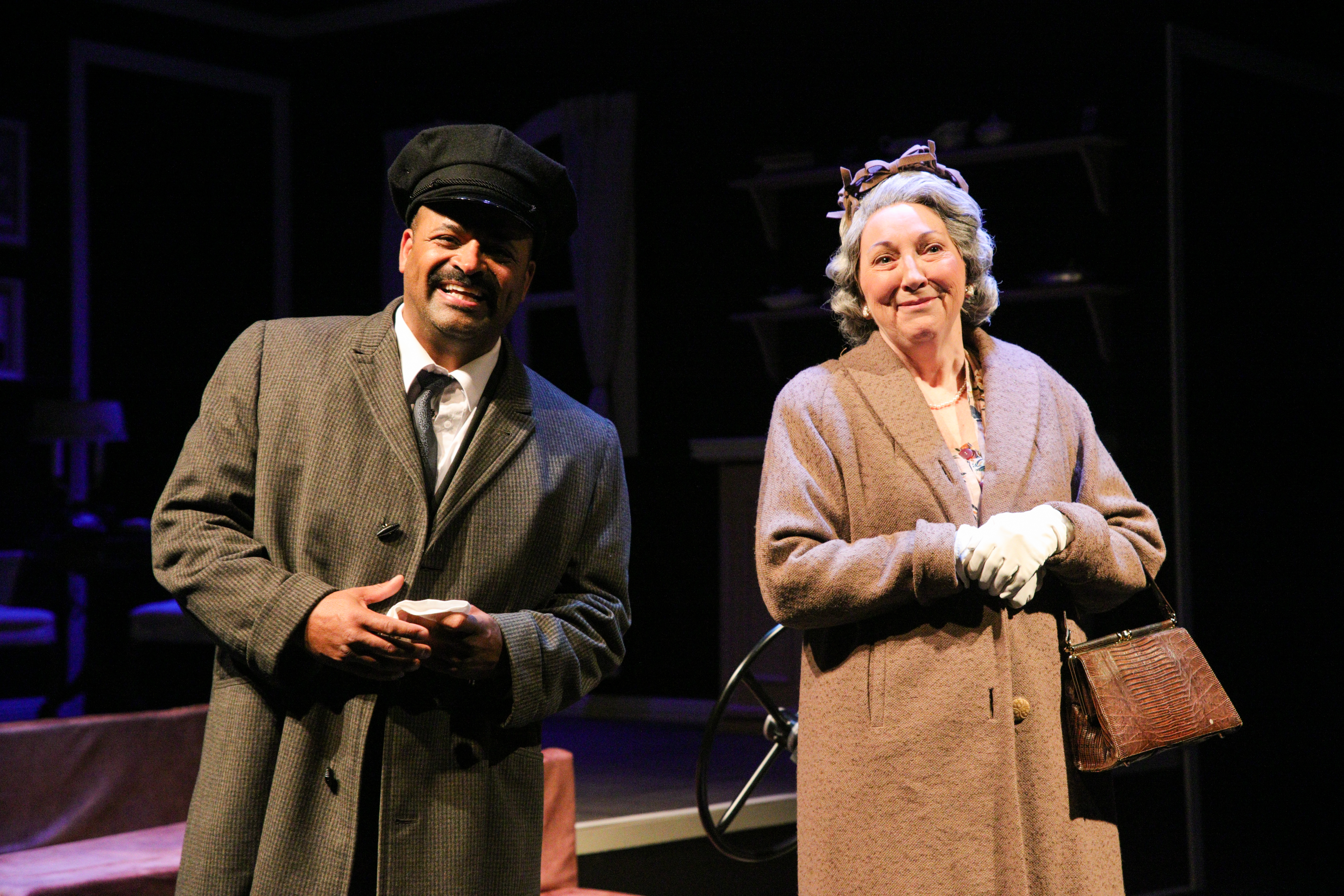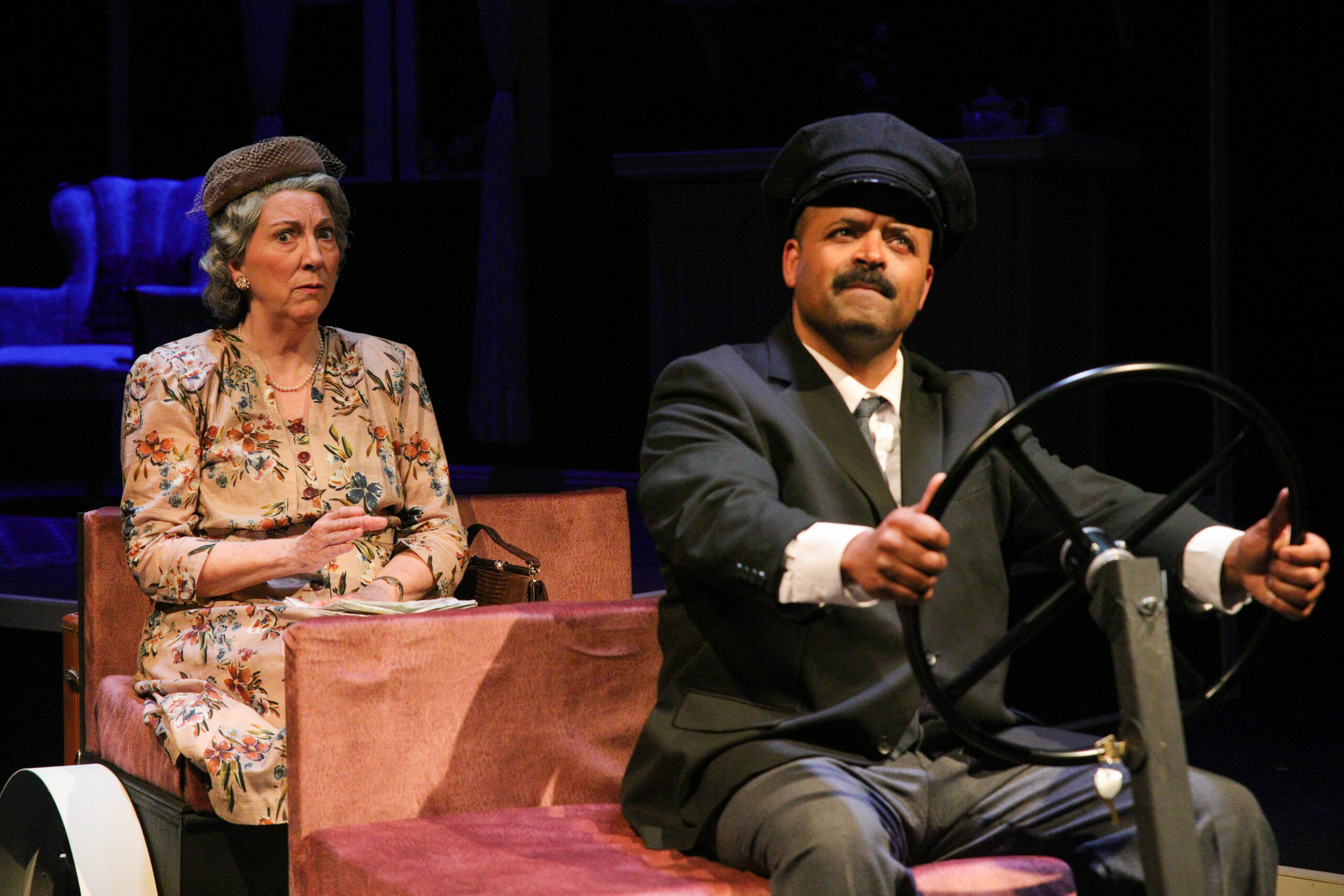LOGAN — The Black Box Theater on the Utah State University campus is an intimate space with room for a few dozen audience members lucky enough to squeeze in alongside the actors viewing Driving Miss Daisy, a gem of a production. Playwright Alfred Urhy sets the play in Atlanta from the late 1940s to the early 1970s. Miss Daisy Werthen (Leslie Brott) is an elderly Jewish Southern woman requiring a chauffeur. Hoke Coleburn (Herb Newsome), an older African American man, is hired and a personal friendship grows even as society deals with prejudice. Driving Miss Daisy won the 1988 Pulitzer Prize and the Outer Critics Circle Award for Best Off-Broadway play. Some patrons will recognize the title from the 1989 film adaptation starring Jessica Tandy and Morgan Freeman, and winner of several Academy Awards- Best Picture, Best Actress (Tandy), Best Makeup, and Best Adapted Screenplay. With such a brilliant pedigree, it might be understandably daunting to produce, but the cast and production team at the Lyric Rep have risen to the occasion and more.

The direction by Summer Session is tight and succinct, flowing smoothly without fanfare through twenty-five years from one vignette-style scene to the next. Spanning this time frame is not easy, so the design elements work well together to tell the passage of time in the lives of characters, Daisy, Hoke, and Daisy’s son Boolie Werthan (Lance Rasmussen). Costume Designer Lydia Semler uses subtle changes in clothing, footwear, and outerwear to indicate the passage of time for Miss Daisy and Hoke. Boolie’s costuming ranges from late 1940s conservative to early 1970s casual business fashion and is the most clear in communicating the large time frame. Using distinct costumes was a clever choice to show how the decades are marching on.
Rebecca Ashby’s wig and hair tasks were simple, with only Miss Daisy to coif. Mostly I didn’t mind that her hairstyle never changed throughout the play, until the final scenes in the nursing home. This minimal change was bothersome and a picky point to wonder if a 95+-year-old woman would still have the same full head of hair, but I reasoned that such a woman probably would have worn a wig.

The set design by Melanie Valera Garcia establishes the time and place as a mid-century upper-middle class home, which grows quainter as Miss Daisy ages though remaining familiar and comfortably stuck in the past. Miss Daisy’s home remains quintessentially Miss Daisy’s. The other locations were cleverly tucked in around the black box: Boolie’s business office, a local telephone booth, the all-important automobile where so many conversations take place, and the eventual nursing home which is the location of the tender last scene.
Most impressive was the acting technique demonstrated by the two main characters. Leslie Brott and Herb Newsome deliver a master class on portraying believable and convincing aging without caricature or exaggeration. The small and relentless changes that come with aging were perfect: increasingly cautious steps descending the stairs, the slight shrinking into oneself, stiffness when rising from a chair, and even getting into and out of the automobile. Both performers demonstrate impressive vocal techniques showing aging. Brott speaks with a growing treble and reediness over time and Newsome delivers a measured cadence of Hoke’s speech which slows almost imperceptibly throughout the story.

The greatest accomplishment in this production was their dual performance of an evolving genuine caring and friendship that develops throughout the play, but only for two hours in real-time. Brott as Miss Daisy initially gives an adversarial response to hiring a chauffeur at the beginning of the play, and Newsome delivers a congenial persistence setting the tone for the relationship. While Miss Daisy bullies and mistreats Hoke, Newsome performs truthfully as patient and kind, leading to a convincing delivery when Hoke stands up for himself by reminding Miss Daisy that he deserves respect. The chemistry of Brott and Newsome gave sincerity to the growing humor and tenderness. The tender scene where Hoke struggles through an ice storm to make sure that Daisy is safe and is not alone is so effective leading to Daisy admitting that Hoke is her best friend. The final scene, set in the nursing home on Thanksgiving day, was so caring it brought tears to my eyes. Their unconventional yet honest friendship is everything to this performance.
This is an all-around stellar production of Driving Miss Daisy, an outstanding original work where every production element lives up to this praise. Plan to arrive at the Black Box Theater early, as the intimate seating is limited to general admission, and the far-right seats in the house-right section suffer from an impaired view of the action. This show runs through July 27, playing in repertory on various dates in Logan, Utah. I strongly encourage play-goers to make time to see this show. Driving Miss Daisy is not produced often in Utah, and you’d be lucky to view a performance of this cast.
[box] Driving Miss Daisy plays at the Black Box Theatre in the Fine Arts Center on the campus of Utah State University (400 N 1200 E) on various dates through July 27th at 7:30pm. Tickets are $18-38. For more information, visit https://www.usu.edu/lyricrep/. [/box]

